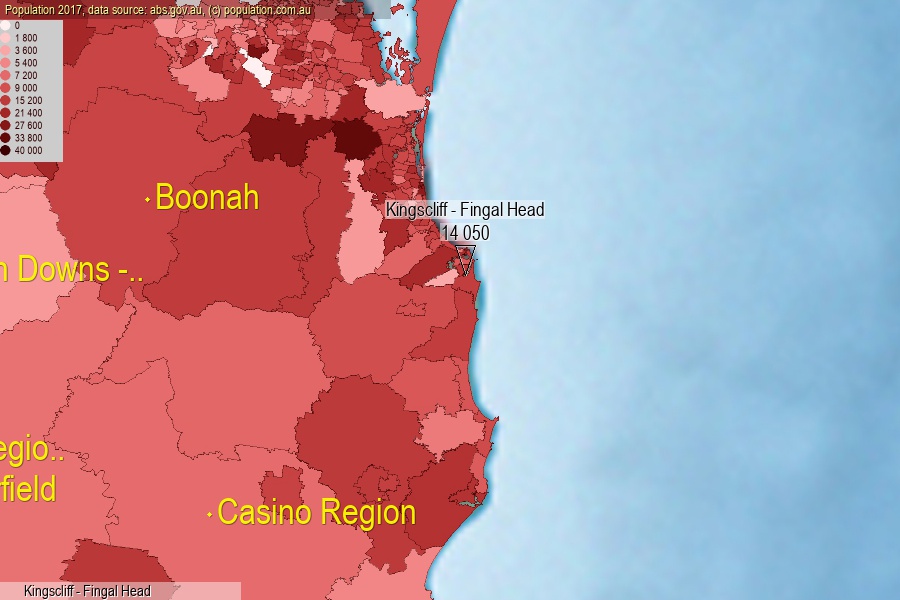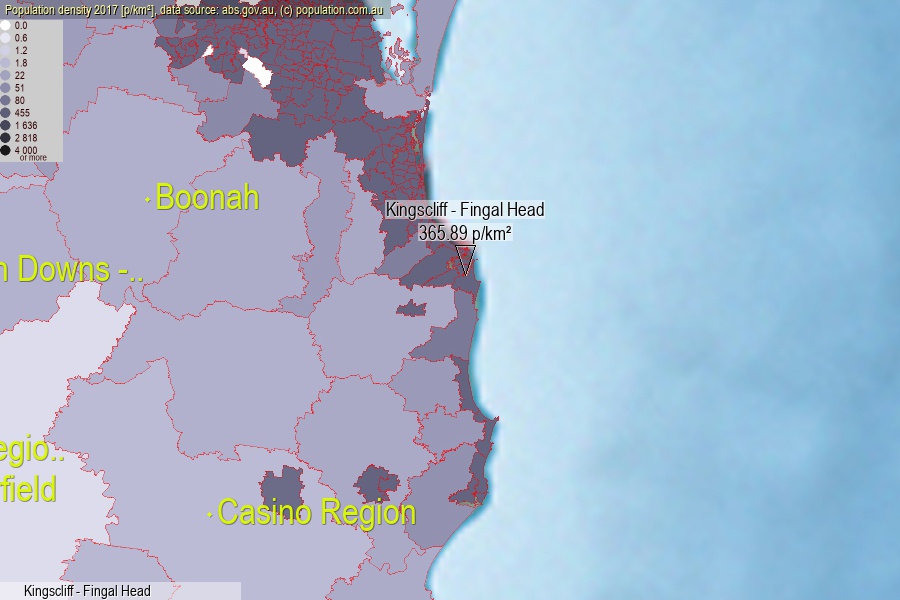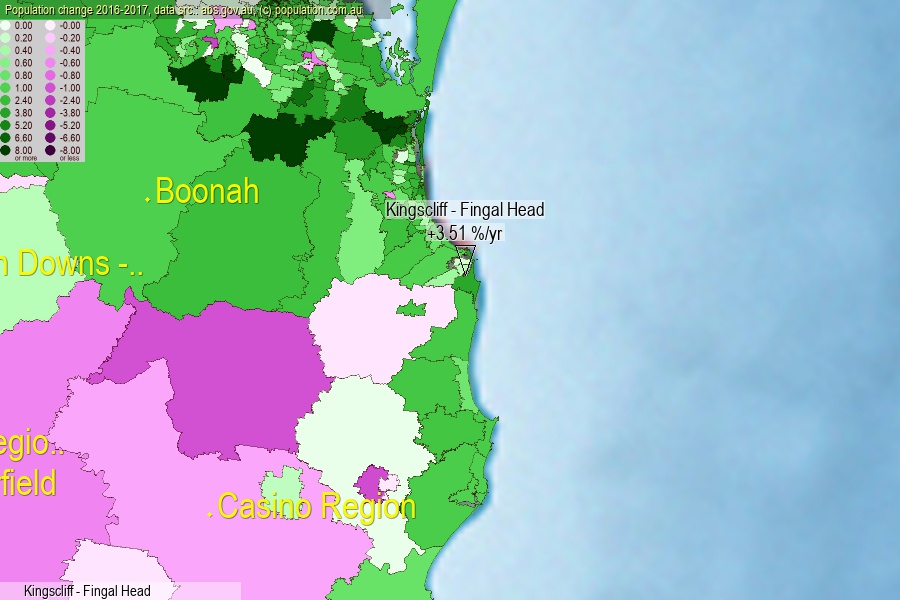 population.com.au
population.com.auLast official estimated population of Kingscliff - Fingal Head (as Statistical Area Level 2) was 14 050 people (on 2017-06-30)[2]. This was 0.06% of total Australian population and 0.177% of NSW population. Area of Kingscliff - Fingal Head is 38.40 km², in this year population density was 365.89 p/km² . If population growth rate would be same as in period 2016-2017 (+3.51%/yr), Kingscliff - Fingal Head population in 2025 would be 18 511. [0]



Click to enlarge. Kingscliff - Fingal Head is located in the center of the images.
Population [people], population density [p./km²] and population change [%/year] [2]
View borders » (new window) [4]
[1991-1992] +0.41 %/Yr.
[1992-1993] +0.69 %/Yr.
[1993-1994] +1.99 %/Yr.
[1994-1995] +1.74 %/Yr.
[1995-1996] +2.13 %/Yr.
[1996-1997] +4.46 %/Yr.
[1997-1998] +4.23 %/Yr.
[1998-1999] +2.47 %/Yr.
[1999-2000] +4.78 %/Yr.
[2000-2001] +2.83 %/Yr.
[2001-2002] +0.68 %/Yr.
[2002-2003] +1.72 %/Yr.
[2003-2004] +2.82 %/Yr.
[2004-2005] +3.40 %/Yr.
[2005-2006] +5.09 %/Yr.
[2006-2007] +5.15 %/Yr.
[2007-2008] +4.39 %/Yr.
[2008-2009] +3.18 %/Yr.
[2009-2010] +2.13 %/Yr.
[2010-2011] +0.84 %/Yr.
[2011-2012] +2.36 %/Yr.
[2012-2013] +2.48 %/Yr.
[2013-2014] +2.99 %/Yr.
[2014-2015] +4.39 %/Yr.
[2015-2016] +5.80 %/Yr.
[2016-2017] +3.51 %/Yr.
[0] Calculated with linear interpolation from officially estimated population
[1] Read more about SA2 and Australian Statistical Geography Standard (ASGS) on abs.gov.au
[2] Population data from Australian Bureau of Statistics (Population and density: 2017; change: 2016-2017)
[3] Digital Boundaries: Australian Statistical Geography Standard (ASGS) 2016.
[4] Border coordinates are simplifyed using Ramer-Douglas-Peucker algorithm.